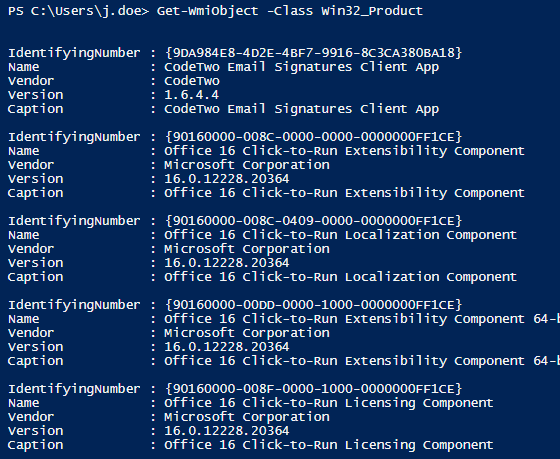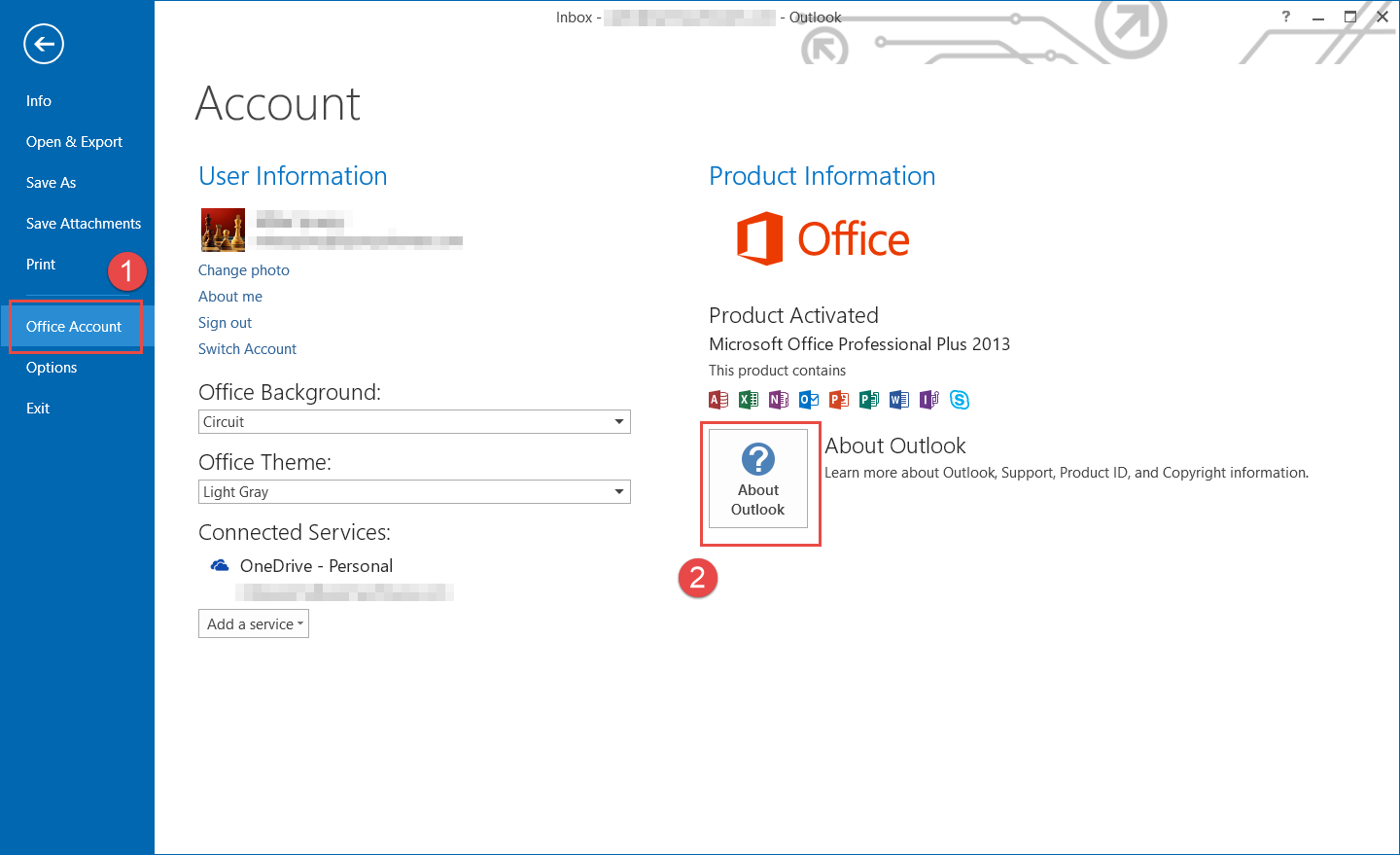
In the new dialogue with the list of your Outlook add-ins, put the checkmark to the add-in checkbox and hit OK: Select COM Add-Ins from the drop-down and hit Go. But if the add-in appears as Inactive Application Add-In, you can start directly from COM Add-Ins. The next step is activating in COM Add-Ins. Select the add-in there in the list (its component name might differ from the program name, but usually contains recognizable key words), and hit Enable, then Close.

The add-in might be listed either as Disabled, or as Inactive.ĭown below the dialogue, please locate drop-down options and choose ‘Disabled Items’, then hit Go.
#Determine outlook version Pc
If that is the case, you might need to uninstall the add-in from your PC via Start-> Control Panel-> Programs and Features, then start new installation. Please scroll through the list of all your add-ins: if the add-in is not listed there, most probably, you installed it as another user (Administrator) with the setting ‘Only for me’. Locate the Options button at the bottom of the list on the left. Please go to Outlook menu File in the top-left portion of the window: Outlook lets you open the list of Disabled Items from here by clicking on ‘View More Details’ – and select ‘Never disable this add-in’, or let the system keep it inactive (if you believe the add-in causes issues to Outlook).Īnd if the add-in is installed, and you got no errors upon the installation, but do not see it on the Outlook ribbon – the very first place to look for it is the list of all Outlook add-ins, installed and available for current computer users. If something went wrong, and Outlook experienced an issue while the add-in was loading or processing data, you could also see the add-in among ‘Disabled Items’: Most our Outlook add-ins add commands to the new Outlook ribbon with our company name: ‘MAPILab’: So, we can offer some general directions to troubleshoot this. > I opened Outlook and got an error stating the add-in is very slow and should be disabled.
#Determine outlook version trial
> My trial has ended, and I can no longer see add-in buttons in Outlook. > After several weeks of use without problems, it suddenly stopped working. > We have downloaded the trial version of the add-in and have not found a way to make it work properly. Setup seems to run correctly and confirms install. We sometimes get requests from our customers who downloaded and installed the add-in, but cannot locate program options in Outlook for some reason: Reporting solutions, add-ons for Microsoft Excel, Outlook Express Web Analytics, HelpDesk and Workflow solutions for SharePoint Manage signatures and disclaimers in corporate emailsĭownload emails from external POP3 servers to Exchange Multiple Exchange mailboxes search with a range of features Save, remove and manage attachments on server sideĪutomatically print emails and attachments on Exchange Server Solutions for any environment based on Microsoft Exchange Server Prints emails and attachments automaticallyĢ0 apps to improve your daily work with Outlook Personalize emails with advanced mail mergingĬovers all attachments needs: extract, ZIP, manage Get-OfficeProPlusToolKit.The line of Microsoft Outlook tools and appsġ4 add-ins in one bundle for the best priceįinds and removes duplicated in emails and postsįinds and removes duplicated contacts, tasks, etc


Microsoft Spotlight Podcast Youtube Channel Recent Posts Sara has spoken at many events over the past couple of years including the South Coast Summit, 365 Saturday Amsterdam, In today's episode, Jon Jarvis is joined by guest co-host Sophie Dimelow and Sara Lagerquist! Sara is a 3 time Microsoft Business Applications MVP from Sweden and works as a Power Platform Consultant at CRM-Konsulterna. Once you have obtained the required information, you need identity which Outlook version is contacting to your Exchange server by using the following table. $files = Get-ChildItem $logpath |Where-Object |group client-software-version # We limit the amount of logs by timeframe. $logpath = 'C:\Program Files\Microsoft\Exchange Server\V14\Logging\RPC Client Access' Change it to match your Exchange version. # This is just default path to Exchange 2010 RPC logs.


 0 kommentar(er)
0 kommentar(er)
